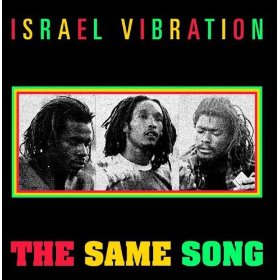 Walking the Streets of Glory: Israel Vibration’s The Same Song
Walking the Streets of Glory: Israel Vibration’s The Same Song
The cardinal rule for any serious appraisal of art involves a necessity to separate all discussion of the artist from the artifact. Mostly this is essential because so many unsavory characters have managed to create amazing art despite—or because of—their self absorption and nastiness. Monomania is sometimes obligatory, as we have seen from masters ranging from Tolstoy to Miles Davis. In short, it seldom sheds meaningful insight on a famous (or infamous) work to stand either on a pedestal or in the trenches, attempting to offer up easy (or difficult) analysis.
The list of artists known as assholes—or worse—to their friends or enemies is not short, but it’s a mistaken assumption that only difficult people create works that last. On the other hand, the list of genuinely decent human beings who have managed to make meaningful art is short but sweet: John Coltrane, Curtis Mayfield and Eric Dolphy come immediately to mind. However, hagiography rarely augments an individual’s oeuvre; in fact, it usually besmirches it. The only thing excessive praise and inappropriate criticism share is that they almost always say more about the commentator than the art being commented upon. The proponents of either extreme usually betray religious leanings that render their insights instantly dated and ultimately irrelevant (postmodern literary criticism and political correctness have been the more popular—and culpable—cults of the critical arena in recent decades).
And yet. All of that being said, sometimes it is impossible to ignore the life and the way(s) it influenced an artist’s development. With one group in particular, it is not only impossible, but negligent to make no mention of their exceptional trajectory from obscure and impoverished kids to adored legends of reggae music. Make no mistake, Israel Vibration’s debut, The Same Song is an indispensable classic, and would be loved—and discussed—if no biographical information on the artists was available. Nevertheless, the blissful sense of wonderment these songs provide accrue additional layers of meaning, and import, when the lives and circumstances of the young men who created them are considered. Long story shortened: Jamaica endured a polio epidemic in the latter years of the 1950s. Three of the boys disabled by the disease, Lascelle Bulgin, Albert Craig and Cecil Spence, met at a rehabilitation facility in Kingston. They bonded over the love of music and a dedication to Rastafarianism (legend has it that once they grew out their dreadlocks they were summarily evicted from the Mona Heights Centre).
Eventually they formed a vocal trio and, calling themselves Israel Vibration, began singing for change on various street corners throughout the city of Kingston. They were rescued from performing (and living) on the streets by the Twelve Tribes of Israel, who helped fund the recording of their first album. After more than five years of struggling, sharing and singing, their vision, and sound, was fully formed when they entered the studio. The results, quite simply, are staggering. The title track is, like the Mighty Diamonds’ “Right Time”, an opening salvo that also serves as a powerful—and empowering—statement of purpose: young men who had faced little other than hardship and discrimination, wise beyond their years, crafting an open letter of acceptance, unity and inevitability.
They tackle similar issues as the other landmark albums already discussed (this being roots reggae, the themes and sounds are not dissimilar), but where the Mighty Diamonds and Culture confront injustice and preach peace with, respectively, heavy doses of soul-influence and celebratory abandon, Israel Vibration balance the two styles with their own unique groove. On the more upbeat songs, like “Why Worry” and especially the ebullient “Walk the Streets of Glory”, the voices are appropriately buoyant; on the more topical, defiant songs, like “Weep & Mourn” and “Ball of Fire”, the pace—and the voices—are languid, even solemn. This manages to be powerfully elegant (or elegantly powerful) music, and it’s in part due to the unforced, easily-invoked vulnerability in these voices, but mostly it involves the very notion of underdogs speaking out for the underdog—without pity and with the gentle perseverance of faith. These last two songs describe the plights of the have-nots and the pitiful apathy of the powerful on par with the best efforts of Bob Marley and Burning Spear. And yet, even when the subject matter is deadly serious, there is a ceaseless air of celebration and joy that makes all the sense in the world: the people making this music are, when all was said and done, happily aware of how lucky they were simply to be alive.
